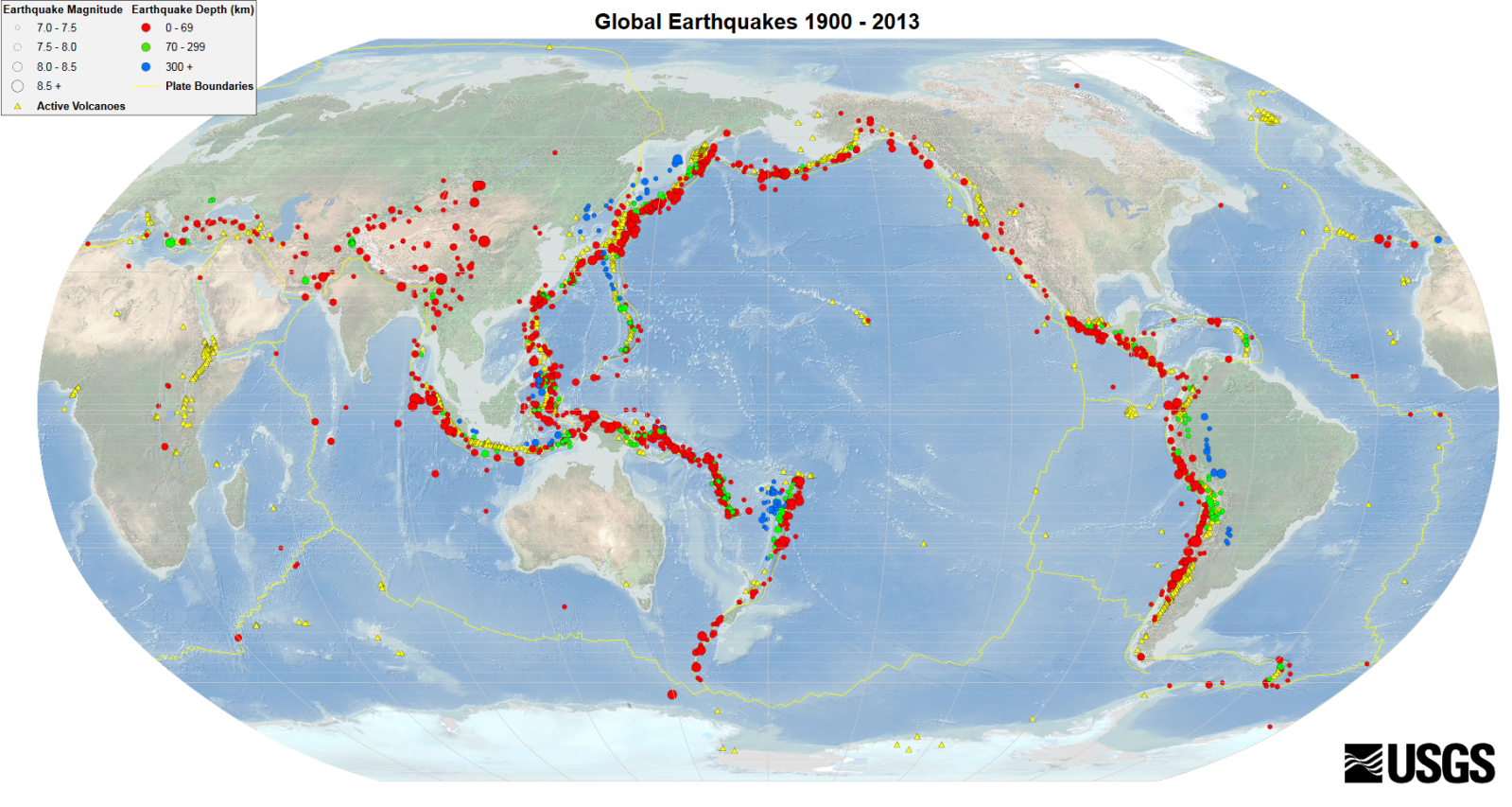Follow us on Google News (click on ☆)
This major discovery was made along the Nankai Trough off Japan, an area known for violent seismic activity. Researchers used ultra-sensitive sensors to track these slow tectonic movements, which unfold over several weeks.

Global earthquakes (1900 to 2013):
- Magnitude ≥ 7.0 earthquakes (depth 0–69 km).
- Active volcanoes.
USGS Image
How do slow earthquakes work?
Slow earthquakes gradually release energy accumulated between two tectonic plates. Unlike conventional earthquakes, they don't cause violent shaking but reduce deep-seated stresses.
These events propagate at a speed of 0.6 to 1.2 miles per day (1 to 2 km). The sensors detected minute displacements of just a few millimeters along the fault.
Scientists also found these earthquakes occur in areas with abnormally high underground fluid pressure. This observation confirms the influence of fluids in triggering slow slips.
A breakthrough for earthquake forecasting
The Nankai Trough generated a magnitude 8 earthquake in 1946, killing over 1,300 people. New data suggests slow earthquakes might mitigate risk by dissipating some accumulated energy.
This discovery could improve tsunami prediction models. By better understanding these mechanisms, researchers hope to identify other at-risk zones like the Cascadia Subduction Zone near the U.S. coast.
The unprecedented precision of the sensors used paves the way for more detailed monitoring of underwater faults. These tools could enhance our understanding of silent tectonic movements.